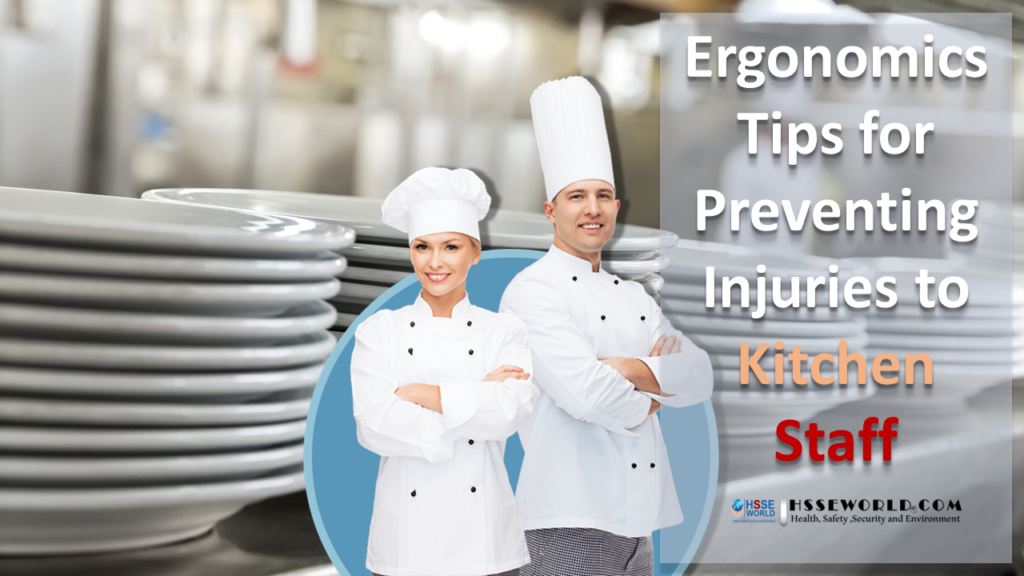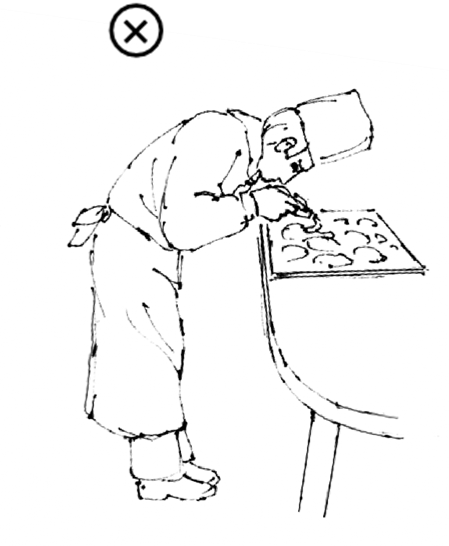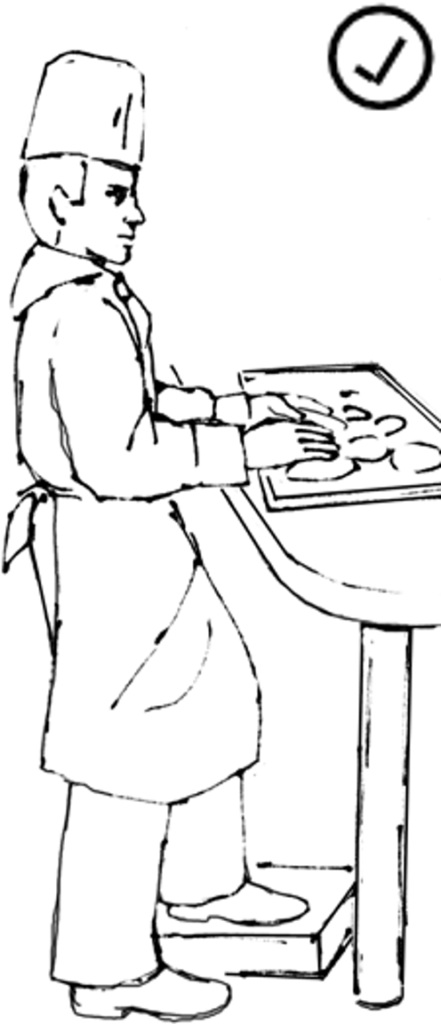Ergonomics Tips for Preventing Injuries to Kitchen Staff
4 min readMany of the ways we work such as lifting, reaching, or repeating the same movements may strain our bodies and lead to injuries. Ergonomics prevent these types of injuries by fitting the job to the person using proper equipment and work practices. This results in the safest way to work and prevents workplace injuries. This article contains ergonomic tips and general information about tasks that contribute to musculoskeletal injuries (MSIs) such as sprains and strains. A musculoskeletal injury (MSI) prevention program is the responsibility of the employer.
Also Read: Photo of the day: Conveyors Safety Tips

What is Ergonomics?
The high number of sprains and strains (musculoskeletal injuries — MSIs) in the hospitality industry concerns employers and workers.
Employers must provide equipment and establish safe work practices to reduce the risks of sprains and strains (MSI). Employers must also instruct workers in these safe work practices. Workers must follow employers’ instructions to protect themselves.
Working together, employers and workers can prevent many sprain and strain-type injuries (MSIs).
Risk Factors
Many jobs have risks that can lead to sprain and strain injuries (MSIs). If we are aware of the risk factors, we may be able to change how we do our jobs and prevent injuries.
This Article explains some of the risks of working in a kitchen and provides tips on work practices to prevent injuries.
Prevention is the best policy
Also Read: Photo of the day: Preventing Common Kitchen Hazards
TIPS to Prevent Awkward Postures
Our bodies function best in comfortable (neutral) postures. Awkward body postures increase the stress on ligaments and joints. This can lead to fatigue and discomfort, and increase the risk of injury.
Preparing ingredients, cooking, or plating often results in awkward postures for kitchen staff. Awkward postures can happen when you:
- Reach above shoulder level
- Reach below knee level
- Reach across deep counters
- Twist to reach sideways
- Hold objects


You may not feel pain or discomfort when in risky postures, but the potential for injury is still present.
Be aware of your posture when you work.
Your posture depends on:
- The height of the work surface
- Where materials are stored
- Space available in your work area
- How do you organize your work area
- How you position your body
- How you hold objects

To reduce your risk of injury, PRACTICE THESE TIPS
- Reduce your reach.
- Use the near part of the work surface, grill, or stove.
- Tilt bins towards you.
- Store frequently used utensils, dishes, and food between shoulder and hip height, and close to where they are needed.
- Position frequently used bulk ingredients close to your work area and at a convenient height (e.g., use a cart).
- Use a work surface that is waist level for forceful tasks (e.g., chopping).
- Use a work surface that is elbow height for finely detailed work (e.g., pastries, candies).
- Stand as close to the front of the work surface as possible.
- Turn your feet to point at your work to prevent twisting your back.
- Select utensils that have a large, rounded grip to allow the use of your whole hand rather than just your fingers.
Also Download: Free Ergonomics Checklist for General Industry
TIPS to Prevent High Muscle Forces
Muscles produce force to move or hold a posture. High forces can result in injury. High forces are required to lift, lower, carry, push, or pull heavy objects, especially in awkward postures. High forces are also required to hold a posture, especially for long periods.
To reduce your risk of injury, PRACTICE THESE TIPS . . .
- Put one foot on a step or rail to reduce stress on your back and legs when standing for long periods. From time to time, alternate the foot you have on the rail.
- Take frequent “micro-breaks” or share the work with a co-worker when you are required to hold a posture for long periods.
- Wear shoes with enough cushioning to relieve the stress on your knees and back when standing for long periods.
- Use anti-fatigue matting when standing is required for long periods to reduce the stress on your back and legs.
- Choose tools and appliances carefully.
- Select utensils designed to reduce force and awkward postures (e.g., tools that have good grips, and knives that are sharp and designed for the task being performed).
TIPS to Prevent Repetitive Work
The same muscles are used over and over again in repetitive work. Repeated forceful movements especially in awkward postures increase the risk of injury.
To reduce your risk of injury, PRACTICE THESE TIPS . . .
- Vary your technique to use different muscles, such as alternating between left and right hands.
- Vary your activities and pace repetitive tasks. Take a few minutes to do something that uses different muscles.
- Take “micro pauses”.
Micro Pause
- Let muscles rest by pausing for 5 to 10 seconds.
- Return to an upright posture and let your arms hang loosely by your sides.
Also Read: Musculoskeletal Disorders (MSDs) in the Prep Kitchen
For more safety Resources Please Visit Safetybagresources



